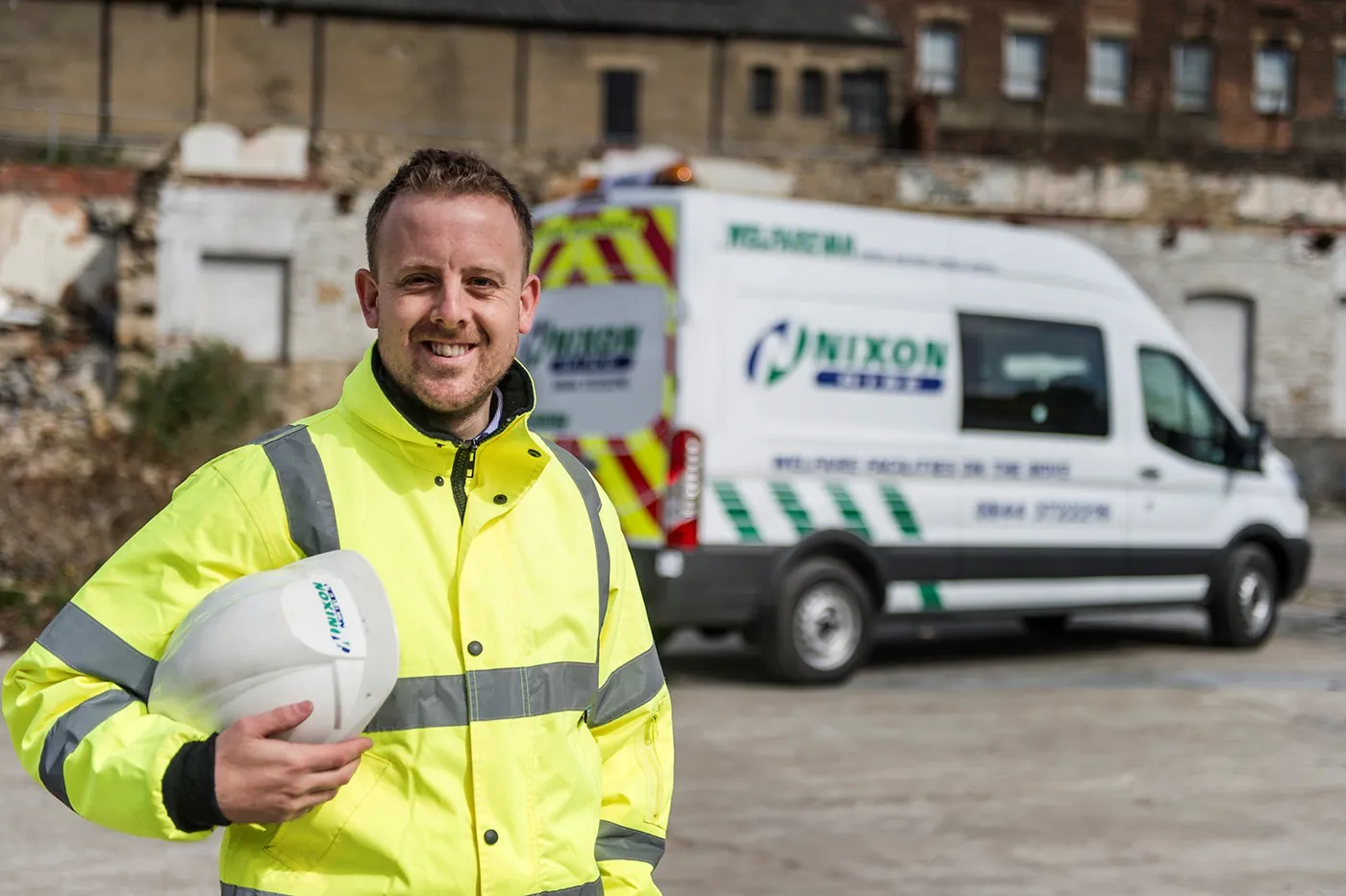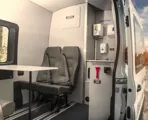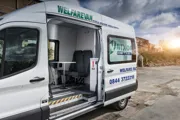Rising demand from construction fleets for welfare vans will see rental firm Nixon Hire almost double the number of vehicles it can supply this year, from 174 to 300.
While welfare vans may be a relatively small part of Nixon Hire’s business – the firm has a catalogue of 15,000 products, ranging from portable office and toilet units to dump trucks and 22-tonne diggers – it is one of its fastest growing and is playing a significant role in the company’s Vision 2020 growth plan.
Welfare vans are a vital requirement for any company that has employees working road- or rail-side, in particular construction fleets. They have a duty of care to provide facilities such as washing, toilet, drinking water and rest rooms and can be prevented from starting work until such facilities are in place.
In most instances, aside from long projects, welfare vans offer the best solution. However, as projects tend to be short-term and ad hoc in nature, it rarely makes financial sense for fleets to invest in their own vehicles. Cue short-term rental and the likes of Nixon Hire.
Nixon Hire was founded in 1967 (as John Nixon Hire) in Newcastle and today operates 12 depots primarily in Scotland and northern England, plus one depot in Doha, Qatar.
Its fleet of welfare vans is one of the youngest in the industry, with the majority kept for a maximum of five years.
While the bulk of the fleet consists of Ford Transits, Nixon Hire also operates 87 Citroën Relays. The company has already increased its fleet size by 60% this year, in the main adding the new Ford Transit.
“By the end of June, we’re probably going to be close to 300 vehicles,” says Martin Fryer, welfare van fleet manager at Nixon Hire.
“In some cases we’ve had customers who were not able to start a job until they had a welfare van on site, so we’re able to help them out with that.”
The new Transit conversions were subject to a number of revisions until Fryer was satisfied with them. “We had conversions put in four or five times,” he says.
New Euro 6 engines provided the welfare van team with a challenge. “We’ve had a few issues with the weight of the vans. With the extra weight of the new engine we’re looking at an extra 150 to 200 kilos.
“We had to take out as much weight as we could for the conversion – that’s why we had to spend so much time getting it right.”
The Transits were an easy choice for Fryer, although he says the Relays also make decent welfare vans.
“We chose the Transits on the basis that it’s a well-known product and the dealers are excellent,” he explains.
“This is very important – we the need the vehicles to be on the road, because if they’re not on the road, they’re not making any money.”
Nixon Hire has a dedicated team at its Newcastle head office to manage its welfare fleet.
“They deal with every aspect of the vehicles, the hire side and the business side, as well as dealing with maintenance MoTs, servicing, breakdowns, and any other technical issues that we have with the vehicles,” says Fryer.
Nixon Hire’s depots are then responsible for getting the vans ready for hire and out to the customer.
The target is 90% utilisation – nine out of 10 vans on hire at any one time. “We’re not too far off it,” Fryer says.
Key to maintaining a high utilisation rate, is downtime. Good reliability from the Fords and Citroëns helps, while Nixon Hire also recognises that a robust maintenance regime is also crucial.
“All of our maintenance is outsourced,” says Fryer. “At the end of the day, these guys are the experts at making sure these vans are maintained correctly.”
While a lot of work needed is carried out by dealers, some of it is outsourced further.
“We have strong partnerships with other maintenance sites within the depot areas, all over the country. The beauty of that is we can get them anywhere in the UK – it gives us massive flexibility.”
Nixon Hire’s client portfolio is as varied as its hire catalogue, according to Fryer.
“We serve some of the biggest names in the construction industry, companies working on road infrastructure jobs, local authorities, and we also serve niche areas: we’ve had archaeologists use our vans, for example,” says Fryer.
He believes that one of Nixon Hire’s USPs will come from its plan to install telematics in each welfare van, giving customers full visibility of location and driver behaviour. The programme is currently undergoing authorisation before going live later this year.
Not only will it allow the welfare van team to track the location of each vehicle, it will also enable them to be more proactive on maintenance, further reducing downtime.
“We’ll be able to manage the service history in part, by using the telematics to keep track of mileage,” Fryer says, adding: “For a small charge, customers can have a log in, so they will able to see how their staff are driving.”
Customer satisfaction is central to Nixon Hire’s success. Once the welfare vans end their five-year lifecycle with the company and are remarketed, Nixon Hire has customers coming back for more.
“There’s certainly a lot of repeat business,” Fryer says. “Part of my team’s role is to build relationships with customers. Providing good customer service is part of what makes us stand out.”
As the vehicles remain stationary for long periods of time, annual mileage is low which makes the welfare vans an attractive proposition for buyers. Added to their desirability is the specialist refurbishment. “They retain their value well,” says Fryer.
Vision 2020 is Nixon Hire’s growth strategy business plan. Although not specific on details, the company expects to hit its targets four years ahead of schedule in 2016.
Last year its turnover reached £44 million, an average growth of 20% in each of the past four years.
“As part of our strategy we will be pushing further south . We’re strong in Scotland, and northern England,” says Fryer. “The vans are not restricted to depot areas; we can get them anywhere. We could get the vans down south tomorrow.”





















Lissa - 26/08/2015 15:09
First, when someone travel to the country which he never had been there, the first problem is language. There are hundreds and thousands languages in the world. People can't say so many kind of the languages. We need to say something when we traveling. It is a good time for the tour guide. The tour guide can take the conversation with the local people, and that can save a lot of problems from language.